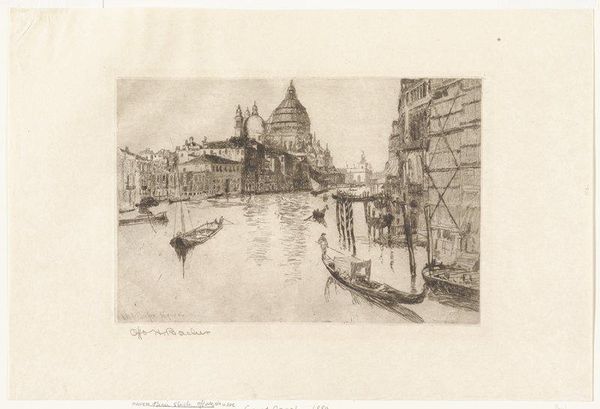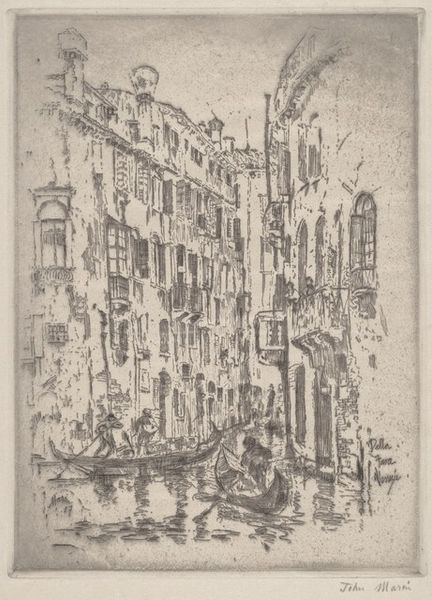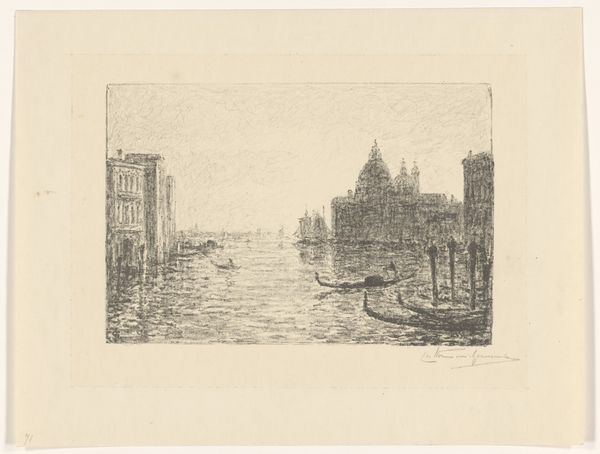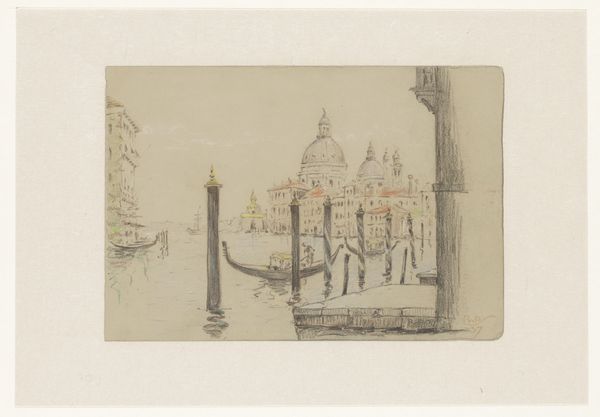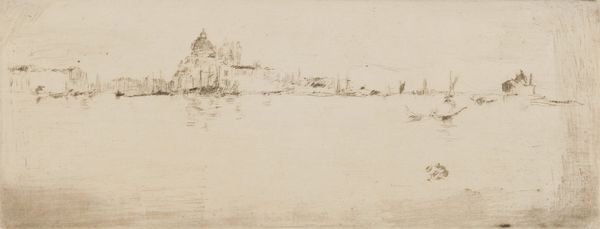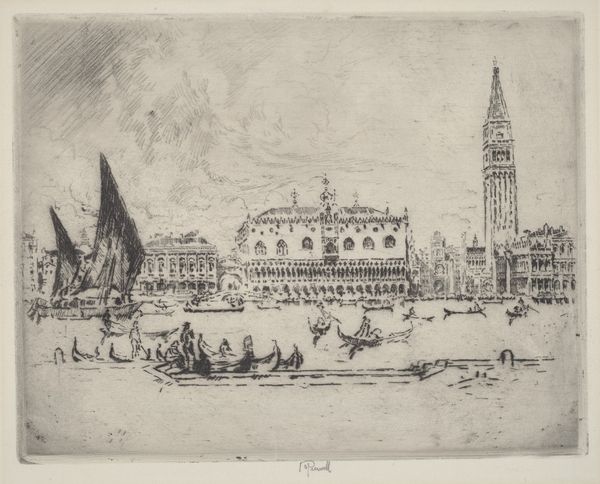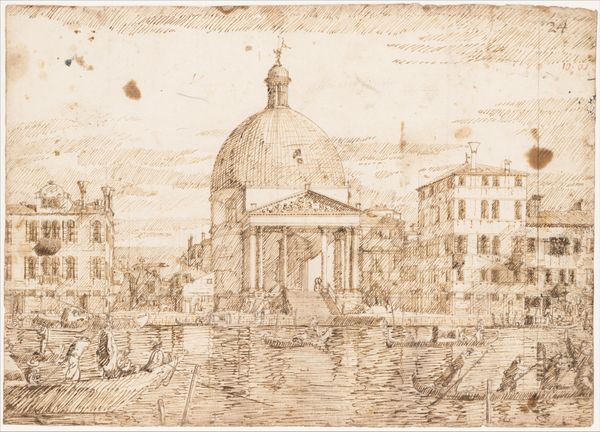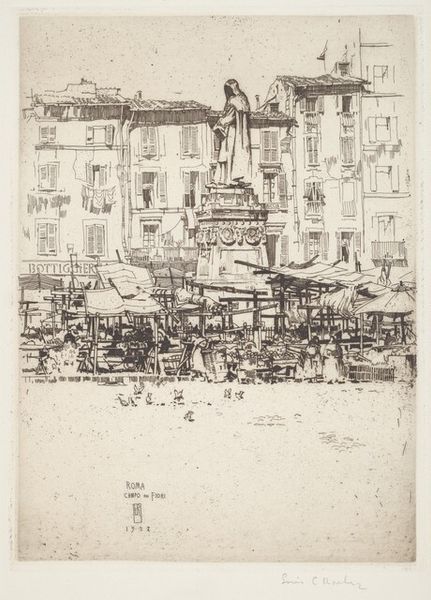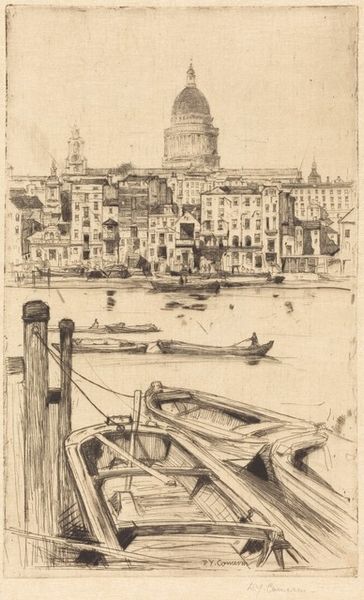
Dimensions: plate: 12.9 x 17.9 cm (5 1/16 x 7 1/16 in.) sheet: 22.8 x 33.6 cm (9 x 13 1/4 in.)
Copyright: National Gallery of Art: CC0 1.0
This is John Marin’s ‘Santa Maria Della Salute, Venice,’ an etching made sometime around 1907. The etching process involves using acid to cut into a metal plate, traditionally copper or zinc. Marin would have coated a plate with a waxy, acid-resistant substance, then scratched his design into the coating, exposing the metal underneath. He would then submerge the plate in acid, which bites into the exposed lines, creating grooves. The plate is then inked, and the surface wiped clean, leaving ink only in the etched lines. Finally, paper is pressed against the plate to produce the print. Marin used these incised lines to create a vibrant image, capturing the light and atmosphere of Venice. The labor-intensive etching process, requiring careful preparation and skilled execution, contrasts with the spontaneous, sketchy quality of the final print. This tension between the crafted nature of the medium and the artist’s desire for immediacy is key to understanding Marin’s approach. By embracing printmaking, a medium often associated with reproduction and commerce, Marin challenges traditional hierarchies between art and craft.
Comments
No comments
Be the first to comment and join the conversation on the ultimate creative platform.



